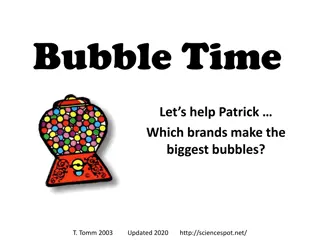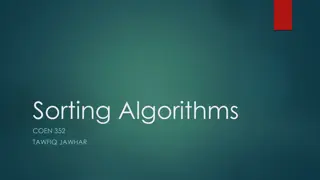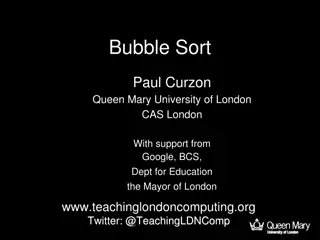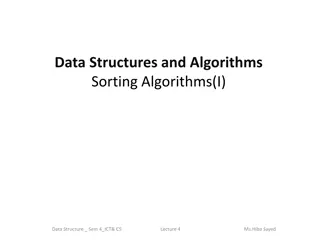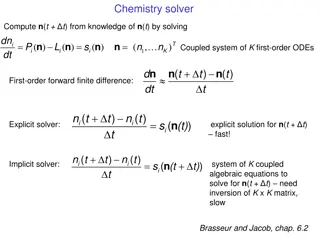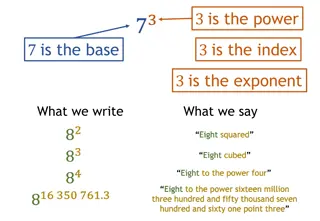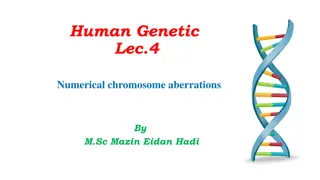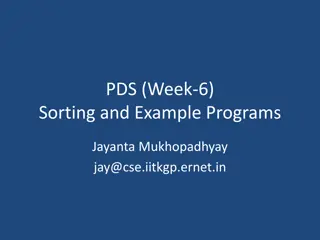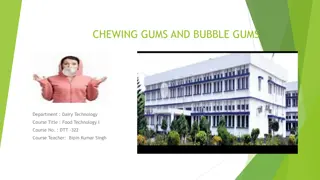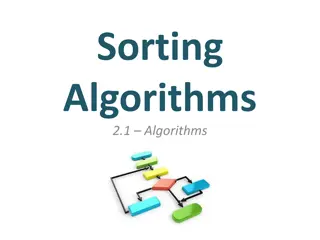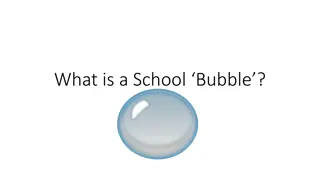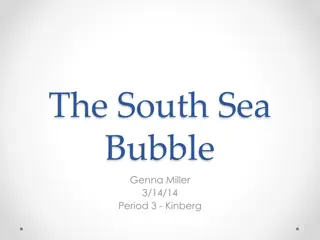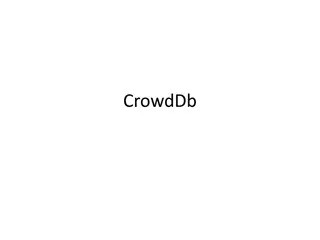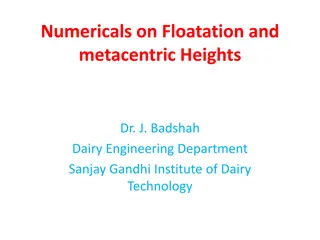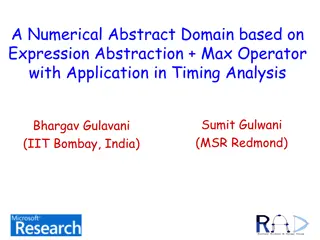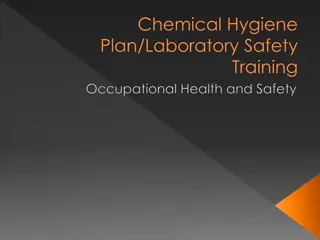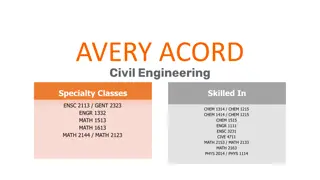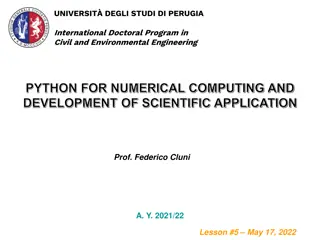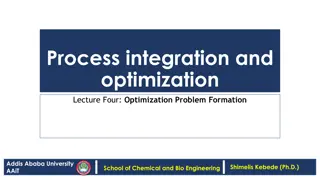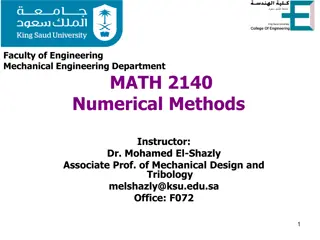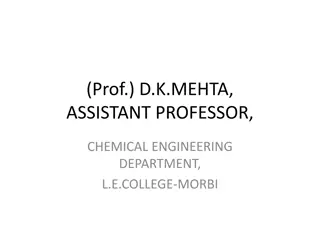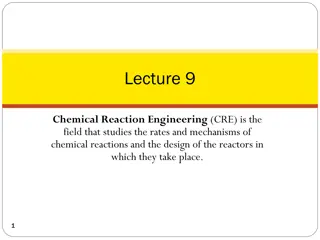Numerical Analysis of Bubble-Powered Micropump in Chemical Engineering
This study focuses on developing a numerical model to simulate a micropump driven by bubble formation and growth. The research covers various sub-models such as initial liquid heating, bubble growth, and collapse, with the objective of understanding the operation of the micropump. Basic assumptions, conservation equations, and liquid-vapor boundary representation are discussed to provide a comprehensive overview of the study.
Download Presentation

Please find below an Image/Link to download the presentation.
The content on the website is provided AS IS for your information and personal use only. It may not be sold, licensed, or shared on other websites without obtaining consent from the author. Download presentation by click this link. If you encounter any issues during the download, it is possible that the publisher has removed the file from their server.
E N D
Presentation Transcript
Dept. of Chemical Engineering and Biotechnology Numerical Analysis of Bubble Powered Micropump Gad A. Pinhasi Matan Pe er and Amos Ullmann COMSOL CONFERENCE 2019 Cambridge, September 24 26 1
Micro Pump A lab-on-a-chip (LOC) Micro Fluidic Pumps Insulin Pump (drug delivery) Electronics cooling, Ink Printers, 1mm Active Mixer (Evans et al., 1997) Micro-channels and Pump (Lin and Tsai, 2002) 2
Bubble Micro-Pump Driving force Bubble formation, growth and collapse Vapor volume change Flow control Diffuser/Nozzle Unsteady Pumping flow Pulsing flow No moving parts Jung and Kwak (2007) Tsai and Lin (2002) 3
Bubble Lifetime Cycle Heating Waiting Time Bubble formation: Stable bubble criterion Nucleation Bubble growth Inertia Controlled Diffusion Controlled Collapse Problem: Discontinuity in the flow field in time Deniray and Kim (2004) 4
The Objective Developing a numerical model to simulate the operation of a micro-pump driven by bubble formation and growth. Sub-models: Initial liquid heating, Formation of a critical bubble, Bubble growth and collapse The liquid flow through the nozzles system. 5
Basic Assumptions Laminar flow Heating with constant heat flux. Duty cycle (= 80%) Initial liquid temperature: Ambient Initial Hemispherical critical bubble on the wall Case Study: Displacement Pump: 2D, 3D analysis Bubble growth simulation: 2D spherical Bubble Pump: 2D analysis th DC=th/Tc q Tc t 6
Conservation Equations Continuity Heat and Mass Transfer at the Boundary Phase Change Moving boundary = t ( ) + = u 0 Momentum: NS Eq. u + u = u q k T t , i net L , interface n 2 , = ( ) ( ) q h m T = + + g + u u n p u I i net LG e 3 Heat Eq.: Convection Liquid Heat q Vapor T ( ) e + = u C T k T m h p fg t Evaporation me 7
Liquid-Vapor Boundary Representation Level Set Method Fluid interface representation Level-set Parameter [0,1], =0.5 Fixed Grid Interface n Vapor Liquid RB 1 + = u r m interface t = = + n u u n interface 5 . 0 = ( ) = 1 ( ) = + G L G 8
Bubble Formation Criterion Wall heating Semi-infinite body Constant heat flux k 4 A Liquid Heating 0 2 2 q t x x x = exp T T erfc t 0 t 2 2 t t Critical Radius Critical Radius B 2 = R , B c P P G L Nucleation Heating Plate Hsu (1962) RB 9 Bubble
Liquid Liquid Heating Model Bubble Nucleation Criterion No Heating surface t+dt Yes Interface formation Bubble formation Bubble Growth Model Bubble growth No Bubble Collapse Criterion t+dt Yes Bubble Removal Liquid 10
The CFD Tools MATLAB Based Main program Script (MATLAB) COMSOL Multiphysics Physics: Laminar flow Heat Transfer Fixed Grid Boundary problem: Level set Grid generator Solver Post Proceeding COMSOL Multiphysics and the LiveLink for MATLAB Combine user code and software functions and solvers: 11
Results 1. Diffuser/Nozzle Characteristics 2. Displacement Pump 3. Bubble growth 4. Bubble pump 12
Diffuser/Nozzle Characteristics Steady state flow Minor losses Coef.: K Effectiveness High directed flow Diffuser Nozzle 1000.0 1 2 = x 2 throat p u diffuser nozzle 100.0 = x x x x Nozzel Diff 10.0 1.0 13 0.0 20.0 40.0 60.0 80.0 100.0 120.0 140.0 Re
3D Displacement Pump P P = h 2 1 p g v cycle T 1 ( ) = Q Q Q dt ( ) ( ) = t T + 1 2 net b b 0sin v 2 v t cycle T 0 cycle A Q h Q h Q h 1.2 0.012% 16 Hz 24 Hz 32 Hz 40 Hz 16 Hz - Eff 24 Hz - Eff 32 Hz - Eff 40 Hz - Eff net p net p net p = = = 1.0 0.010% W PdV Pvdt input Efficiency [Wnet/Win] 0.8 0.008% hp [mm] 0.6 0.006% 0.4 0.004% 0.2 0.002% 0.0 0.000% 0 1 2 3 4 5 14 Net Flow [ l/min]
Spherical Bubble Growth Bubble radius time history 3DAnalysis Axial symmetry Comparison against analytical models Diffusion Controlled Inertia Controlled 15
Bubble Pump th DC=th/T q Boundary conditions Pressure drop Heater segment Initial Conditions: Initial temperature: 298K Contact angle 90 Hemispherical liquid domain T t 1 mm 2 mm 0.03 mm 1 mm 0.3 mm 0.18 mm Heating Plate 16
Bubble Growth Stage Velocity-Pressure map 17
Bubble Pump Velocity and flow rate Net flow rate 3.81E-7[m2/s] 9.14 [ l/min] Bubble radius cycle T 1 ( ) = Q Q Q dt Bubble Collapse 1 2 net b b cycle T Bubble Growth R = 0.14mm 0 Net Flow Rate [m2/s] Bubble Radius [m] Duty cycle = 80% Heat Flux in = 1M [W/m2] Heat Flux out = 10k [W/m2] 18 Time [s] Time [s]
Bubble Pump Head and Efficiency 0.350 9.00E-09 8.00E-09 0.300 7.00E-09 0.250 6.00E-09 Efficiency Wflownet/WHeatin 5.00E-09 0.200 hp [mm] 4.00E-09 0.150 3.00E-09 2.00E-09 0.100 1.00E-09 1 Q h Q h net p net p = = 0.050 W 0.00E+00 qdt input T 0.000 -1.00E-09 -1.0 1.0 3.0 5.0 7.0 9.0 Net Flow [ l/min] 19 q=900k, 18.5Hz q=950k, 19.2Hz q=1M, 20Hz q=900k, 18.5Hz q=950k, 19.2Hz q=1M, 20Hz
Summery A numerical model was developed to simulate the operation of a micro-pump driven by bubble formation and growth. The model solves the time dependent conservation equation for viscid fluid: mass, momentum and convection heat transfer. The Level-Set method is being used to represent the gas-liquid interface. The analysis is made by using finite element software- COMSOL Multiphysics. The model was tested against analytical model for diffusive bubble growth. 20
Pinhasi, G.A., Pe'er, M. and Ullmann, A. (2019) Numerical Analysis of Bubble Powered Micropump , Proceedings of COMSOL Conference 2019, Cambridge, September 24 26. 21


